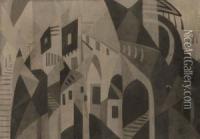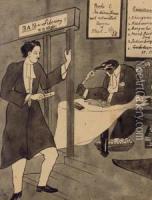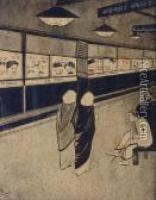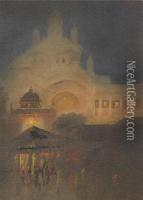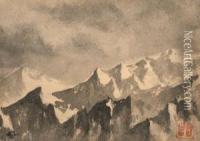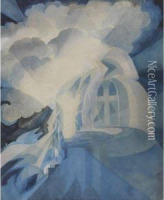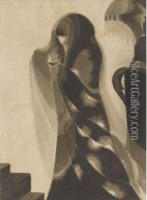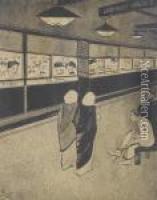Gaganendranath Tagore Paintings
Gaganendranath Tagore was an eminent Indian painter and cartoonist who played a pivotal role in the modernization of Indian art. Born into the culturally prominent Tagore family in Calcutta, he was the nephew of the renowned poet Rabindranath Tagore. Gaganendranath grew up in an environment rich in literature, music, and arts, which influenced his artistic pursuits.
Gaganendranath initially received traditional Indian art training and was self-taught in Western artistic styles. He was one of the earliest Indian artists to experiment with modernist concepts, and his works often reflected a blend of Eastern and Western aesthetics. He founded the Indian Society of Oriental Art with his brother Abanindranath Tagore, which played a crucial role in the development of the Bengal School of Art, promoting a revival of traditional Indian techniques and motifs.
In his early career, Gaganendranath excelled in the genre of caricatures, publishing collections such as 'Adbhut Lok', which satirized the societal norms of the time. He later ventured into landscape and architectural paintings, where he developed a unique style characterized by bold use of color and light, and a focus on mysticism and spirituality.
Throughout his life, Gaganendranath experimented with various styles, including Cubism and expressionism, and was greatly influenced by Japanese brush techniques and the works of European modernists. His later works, particularly those produced after a trip to Japan, demonstrate a striking use of light and shadow, which became a hallmark of his mature style.
Gaganendranath's contributions to Indian art were significant in that he redefined the visual language of Indian painting and contributed to the dialogue between Eastern and Western art forms. His legacy is preserved in the many works held in galleries and museums across India, and through the continued influence he has on modern Indian artists.
